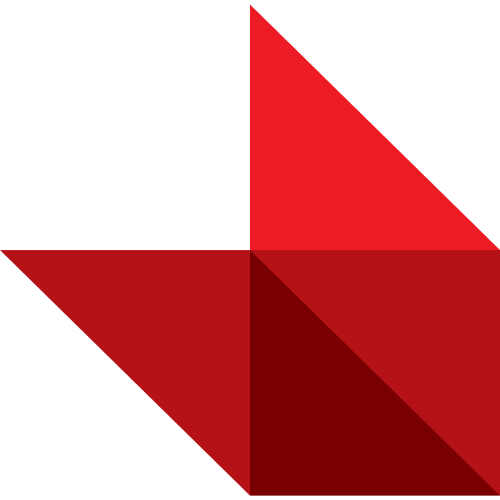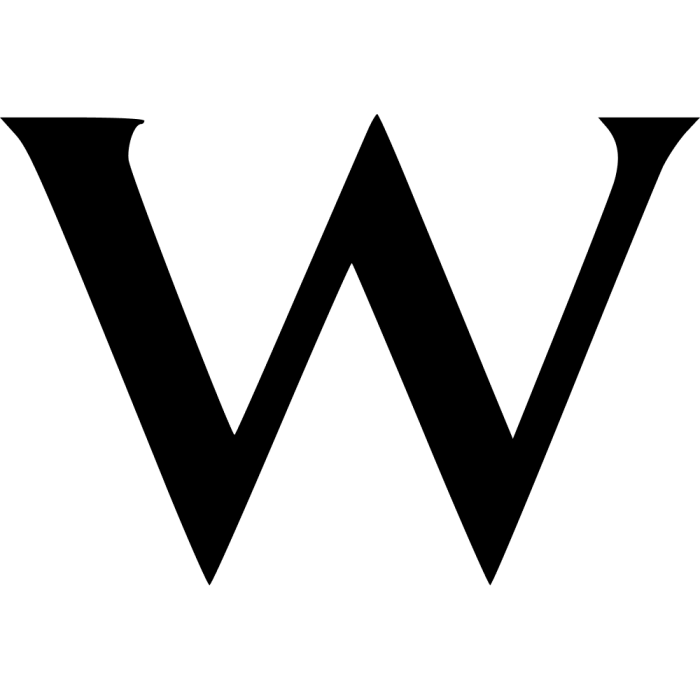Journal of Computational Chemistry, volume 41, issue 18, pages 1718-1729
How accurate are TD‐DFT excited‐state geometries compared to DFT ground‐state geometries?
2
Institut de Química Computacional i Catàlisi, Facultat de CiènciesUniversitat de Girona Girona Spain
|
Publication type: Journal Article
Publication date: 2020-04-23
Journal:
Journal of Computational Chemistry
Quartile SCImago
Q1
Quartile WOS
Q3
Impact factor: 3
ISSN: 01928651, 1096987X
General Chemistry
Computational Mathematics
Abstract
In this work, we take a different angle to the benchmarking of time‐dependent density functional theory (TD‐DFT) for the calculation of excited‐state geometries by extensively assessing how accurate such geometries are compared to ground‐state geometries calculated with ordinary DFT. To this end, we consider 20 medium‐sized aromatic organic compounds whose lowest singlet excited states are ideally suited for TD‐DFT modeling and are very well described by the approximate coupled‐cluster singles and doubles (CC2) method, and then use this method and six different density functionals (BP86, B3LYP, PBE0, M06‐2X, CAM‐B3LYP, and ωB97XD) to optimize the corresponding ground‐ and excited‐state geometries. The results show that although each hybrid functional reproduces the CC2 excited‐state bond lengths very satisfactorily, achieving an overall root mean square error of 0.011 Å for all 336 bonds in the 20 molecules, these errors are distinctly larger than those of only 0.004–0.006 Å with which the hybrid functionals reproduce the CC2 ground‐state bond lengths. Furthermore, for each functional employed, the variation in the error relative to CC2 between different molecules is found to be much larger (by at least a factor of 3) for the excited‐state geometries than for the ground‐state geometries, despite the fact that the molecules/states under investigation have rather uniform chemical and spectroscopic character. Overall, the study finds that even in favorable circumstances, TD‐DFT excited‐state geometries appear intrinsically and comparatively less accurate than DFT ground‐state ones.
Citations by journals
|
1
2
3
4
5
|
|
|
Journal of Physical Chemistry A

|

Journal of Physical Chemistry A
5 publications, 8.77%
|
|
Physical Chemistry Chemical Physics

|

Physical Chemistry Chemical Physics
5 publications, 8.77%
|
|
Journal of Molecular Structure

|

Journal of Molecular Structure
4 publications, 7.02%
|
|
Molecules

|

Molecules
3 publications, 5.26%
|
|
Journal of Chemical Physics

|

Journal of Chemical Physics
3 publications, 5.26%
|
|
Journal of Chemical Theory and Computation

|

Journal of Chemical Theory and Computation
3 publications, 5.26%
|
|
International Journal of Molecular Sciences

|

International Journal of Molecular Sciences
2 publications, 3.51%
|
|
Computational and Theoretical Chemistry

|

Computational and Theoretical Chemistry
2 publications, 3.51%
|
|
Spectrochimica Acta - Part A: Molecular and Biomolecular Spectroscopy

|

Spectrochimica Acta - Part A: Molecular and Biomolecular Spectroscopy
2 publications, 3.51%
|
|
Journal of Materials Chemistry C

|

Journal of Materials Chemistry C
2 publications, 3.51%
|
|
Journal of Organic Chemistry

|

Journal of Organic Chemistry
1 publication, 1.75%
|
|
Physical Review A

|

Physical Review A
1 publication, 1.75%
|
|
Chemosensors

|

Chemosensors
1 publication, 1.75%
|
|
Results in Chemistry

|

Results in Chemistry
1 publication, 1.75%
|
|
Journal of Photochemistry and Photobiology A: Chemistry

|

Journal of Photochemistry and Photobiology A: Chemistry
1 publication, 1.75%
|
|
Journal of Physics and Chemistry of Solids

|

Journal of Physics and Chemistry of Solids
1 publication, 1.75%
|
|
Organic Materials

|

Organic Materials
1 publication, 1.75%
|
|
Chemical Physics

|

Chemical Physics
1 publication, 1.75%
|
|
Small

|

Small
1 publication, 1.75%
|
|
ChemPhotoChem

|

ChemPhotoChem
1 publication, 1.75%
|
|
Journal of Computational Chemistry

|

Journal of Computational Chemistry
1 publication, 1.75%
|
|
Bulletin of the Korean Chemical Society

|

Bulletin of the Korean Chemical Society
1 publication, 1.75%
|
|
ACS Nano

|

ACS Nano
1 publication, 1.75%
|
|
JACS Au

|

JACS Au
1 publication, 1.75%
|
|
Journal of Chemical Information and Modeling

|

Journal of Chemical Information and Modeling
1 publication, 1.75%
|
|
Journal of Physical Chemistry B

|

Journal of Physical Chemistry B
1 publication, 1.75%
|
|
Journal of Physical Chemistry C

|

Journal of Physical Chemistry C
1 publication, 1.75%
|
|
Materials Chemistry Frontiers

|

Materials Chemistry Frontiers
1 publication, 1.75%
|
|
Phase Transitions

|

Phase Transitions
1 publication, 1.75%
|
|
Journal of Spectroscopy

|

Journal of Spectroscopy
1 publication, 1.75%
|
|
1
2
3
4
5
|
Citations by publishers
|
2
4
6
8
10
12
14
|
|
|
American Chemical Society (ACS)

|

American Chemical Society (ACS)
14 publications, 24.56%
|
|
Elsevier

|

Elsevier
14 publications, 24.56%
|
|
Royal Society of Chemistry (RSC)

|

Royal Society of Chemistry (RSC)
8 publications, 14.04%
|
|
Multidisciplinary Digital Publishing Institute (MDPI)

|

Multidisciplinary Digital Publishing Institute (MDPI)
7 publications, 12.28%
|
|
Wiley

|

Wiley
4 publications, 7.02%
|
|
American Institute of Physics (AIP)

|

American Institute of Physics (AIP)
3 publications, 5.26%
|
|
American Physical Society (APS)

|

American Physical Society (APS)
1 publication, 1.75%
|
|
Thieme

|

Thieme
1 publication, 1.75%
|
|
Taylor & Francis

|

Taylor & Francis
1 publication, 1.75%
|
|
Hindawi Limited

|

Hindawi Limited
1 publication, 1.75%
|
|
IOP Publishing

|

IOP Publishing
1 publication, 1.75%
|
|
Canadian Science Publishing

|

Canadian Science Publishing
1 publication, 1.75%
|
|
2
4
6
8
10
12
14
|
- We do not take into account publications that without a DOI.
- Statistics recalculated only for publications connected to researchers, organizations and labs registered on the platform.
- Statistics recalculated weekly.
{"yearsCitations":{"type":"bar","data":{"show":true,"labels":[2020,2021,2022,2023,2024],"ids":[0,0,0,0,0],"codes":[0,0,0,0,0],"imageUrls":["","","","",""],"datasets":[{"label":"Citations number","data":[2,16,18,12,9],"backgroundColor":["#3B82F6","#3B82F6","#3B82F6","#3B82F6","#3B82F6"],"percentage":["3.51","28.07","31.58","21.05","15.79"],"barThickness":null}]},"options":{"indexAxis":"x","maintainAspectRatio":true,"scales":{"y":{"ticks":{"precision":0,"autoSkip":false,"font":{"family":"Montserrat"},"color":"#000000"}},"x":{"ticks":{"stepSize":1,"precision":0,"font":{"family":"Montserrat"},"color":"#000000"}}},"plugins":{"legend":{"position":"top","labels":{"font":{"family":"Montserrat"},"color":"#000000"}},"title":{"display":true,"text":"Citations per year","font":{"size":24,"family":"Montserrat","weight":600},"color":"#000000"}}}},"journals":{"type":"bar","data":{"show":true,"labels":["Journal of Physical Chemistry A","Physical Chemistry Chemical Physics","Journal of Molecular Structure","Molecules","Journal of Chemical Physics","Journal of Chemical Theory and Computation","International Journal of Molecular Sciences","Computational and Theoretical Chemistry","Spectrochimica Acta - Part A: Molecular and Biomolecular Spectroscopy","Journal of Materials Chemistry C","Journal of Organic Chemistry","Physical Review A","Chemosensors","Results in Chemistry","Journal of Photochemistry and Photobiology A: Chemistry","Journal of Physics and Chemistry of Solids","Organic Materials","Chemical Physics","Small","ChemPhotoChem","Journal of Computational Chemistry","Bulletin of the Korean Chemical Society","ACS Nano","JACS Au","Journal of Chemical Information and Modeling","Journal of Physical Chemistry B","Journal of Physical Chemistry C","Materials Chemistry Frontiers","Phase Transitions","Journal of Spectroscopy"],"ids":[15255,1773,9347,1770,544,58,14627,12461,6337,3848,8697,12492,2627,27927,18164,19478,28050,11321,9872,25567,423,7473,8724,26622,13608,14990,8859,7063,20356,3732],"codes":[0,0,0,0,0,0,0,0,0,0,0,0,0,0,0,0,0,0,0,0,0,0,0,0,0,0,0,0,0,0],"imageUrls":["\/storage\/images\/resized\/iLiQsFqFaSEx6chlGQ5fbAwF6VYU3WWa08hkss0g_medium.webp","\/storage\/images\/resized\/leiAYcRDGTSl5B1eCnwpSGqmDEUEfDPPoYisFGhT_medium.webp","\/storage\/images\/resized\/GDnYOu1UpMMfMMRV6Aqle4H0YLLsraeD9IP9qScG_medium.webp","\/storage\/images\/resized\/MjH1ITP7lMYGxeqUZfkt2BnVLgjkk413jwBV97XX_medium.webp","\/storage\/images\/resized\/ARM4e6URKRsbRZvIF0vFis9DjxGloBjnBYJXbHmZ_medium.webp","\/storage\/images\/resized\/iLiQsFqFaSEx6chlGQ5fbAwF6VYU3WWa08hkss0g_medium.webp","\/storage\/images\/resized\/MjH1ITP7lMYGxeqUZfkt2BnVLgjkk413jwBV97XX_medium.webp","\/storage\/images\/resized\/GDnYOu1UpMMfMMRV6Aqle4H0YLLsraeD9IP9qScG_medium.webp","\/storage\/images\/resized\/GDnYOu1UpMMfMMRV6Aqle4H0YLLsraeD9IP9qScG_medium.webp","\/storage\/images\/resized\/leiAYcRDGTSl5B1eCnwpSGqmDEUEfDPPoYisFGhT_medium.webp","\/storage\/images\/resized\/iLiQsFqFaSEx6chlGQ5fbAwF6VYU3WWa08hkss0g_medium.webp","\/storage\/images\/resized\/nrK64iXHTzj43wMrfN1ZoUQ0vanswGzWPN45K3jA_medium.webp","\/storage\/images\/resized\/MjH1ITP7lMYGxeqUZfkt2BnVLgjkk413jwBV97XX_medium.webp","\/storage\/images\/resized\/GDnYOu1UpMMfMMRV6Aqle4H0YLLsraeD9IP9qScG_medium.webp","\/storage\/images\/resized\/GDnYOu1UpMMfMMRV6Aqle4H0YLLsraeD9IP9qScG_medium.webp","\/storage\/images\/resized\/GDnYOu1UpMMfMMRV6Aqle4H0YLLsraeD9IP9qScG_medium.webp","\/storage\/images\/resized\/xqixcltwJYe6H8Uco2JbAFfIOzt7UNKH0OcPOPzO_medium.webp","\/storage\/images\/resized\/GDnYOu1UpMMfMMRV6Aqle4H0YLLsraeD9IP9qScG_medium.webp","\/storage\/images\/resized\/bRyGpdm98BkAUYiK1YFNpl5Z7hPu6Gd87gbIeuG3_medium.webp","\/storage\/images\/resized\/bRyGpdm98BkAUYiK1YFNpl5Z7hPu6Gd87gbIeuG3_medium.webp","\/storage\/images\/resized\/bRyGpdm98BkAUYiK1YFNpl5Z7hPu6Gd87gbIeuG3_medium.webp","\/storage\/images\/resized\/bRyGpdm98BkAUYiK1YFNpl5Z7hPu6Gd87gbIeuG3_medium.webp","\/storage\/images\/resized\/iLiQsFqFaSEx6chlGQ5fbAwF6VYU3WWa08hkss0g_medium.webp","\/storage\/images\/resized\/iLiQsFqFaSEx6chlGQ5fbAwF6VYU3WWa08hkss0g_medium.webp","\/storage\/images\/resized\/iLiQsFqFaSEx6chlGQ5fbAwF6VYU3WWa08hkss0g_medium.webp","\/storage\/images\/resized\/iLiQsFqFaSEx6chlGQ5fbAwF6VYU3WWa08hkss0g_medium.webp","\/storage\/images\/resized\/iLiQsFqFaSEx6chlGQ5fbAwF6VYU3WWa08hkss0g_medium.webp","\/storage\/images\/resized\/leiAYcRDGTSl5B1eCnwpSGqmDEUEfDPPoYisFGhT_medium.webp","\/storage\/images\/resized\/5YZtvLvkPZuc2JHOaZsjCvGSHFCuC3drUwN3YAc5_medium.webp","\/storage\/images\/resized\/hqfzhQAjTGlNSRs6yzFNITgjSMm9Jr2QuotJHIvE_medium.webp"],"datasets":[{"label":"","data":[5,5,4,3,3,3,2,2,2,2,1,1,1,1,1,1,1,1,1,1,1,1,1,1,1,1,1,1,1,1],"backgroundColor":["#3B82F6","#3B82F6","#3B82F6","#3B82F6","#3B82F6","#3B82F6","#3B82F6","#3B82F6","#3B82F6","#3B82F6","#3B82F6","#3B82F6","#3B82F6","#3B82F6","#3B82F6","#3B82F6","#3B82F6","#3B82F6","#3B82F6","#3B82F6","#3B82F6","#3B82F6","#3B82F6","#3B82F6","#3B82F6","#3B82F6","#3B82F6","#3B82F6","#3B82F6","#3B82F6"],"percentage":[8.77,8.77,7.02,5.26,5.26,5.26,3.51,3.51,3.51,3.51,1.75,1.75,1.75,1.75,1.75,1.75,1.75,1.75,1.75,1.75,1.75,1.75,1.75,1.75,1.75,1.75,1.75,1.75,1.75,1.75],"barThickness":13}]},"options":{"indexAxis":"y","maintainAspectRatio":false,"scales":{"y":{"ticks":{"precision":0,"autoSkip":false,"font":{"family":"Montserrat"},"color":"#000000"}},"x":{"ticks":{"stepSize":null,"precision":0,"font":{"family":"Montserrat"},"color":"#000000"}}},"plugins":{"legend":{"position":"top","labels":{"font":{"family":"Montserrat"},"color":"#000000"}},"title":{"display":true,"text":"Journals","font":{"size":24,"family":"Montserrat","weight":600},"color":"#000000"}}}},"publishers":{"type":"bar","data":{"show":true,"labels":["American Chemical Society (ACS)","Elsevier","Royal Society of Chemistry (RSC)","Multidisciplinary Digital Publishing Institute (MDPI)","Wiley","American Institute of Physics (AIP)","American Physical Society (APS)","Thieme","Taylor & Francis","Hindawi Limited","IOP Publishing","Canadian Science Publishing"],"ids":[40,17,123,202,11,250,1539,135,18,6921,2075,6942],"codes":[0,0,0,0,0,0,0,0,0,0,0,0],"imageUrls":["\/storage\/images\/resized\/iLiQsFqFaSEx6chlGQ5fbAwF6VYU3WWa08hkss0g_medium.webp","\/storage\/images\/resized\/GDnYOu1UpMMfMMRV6Aqle4H0YLLsraeD9IP9qScG_medium.webp","\/storage\/images\/resized\/leiAYcRDGTSl5B1eCnwpSGqmDEUEfDPPoYisFGhT_medium.webp","\/storage\/images\/resized\/MjH1ITP7lMYGxeqUZfkt2BnVLgjkk413jwBV97XX_medium.webp","\/storage\/images\/resized\/bRyGpdm98BkAUYiK1YFNpl5Z7hPu6Gd87gbIeuG3_medium.webp","\/storage\/images\/resized\/ARM4e6URKRsbRZvIF0vFis9DjxGloBjnBYJXbHmZ_medium.webp","\/storage\/images\/resized\/nrK64iXHTzj43wMrfN1ZoUQ0vanswGzWPN45K3jA_medium.webp","\/storage\/images\/resized\/xqixcltwJYe6H8Uco2JbAFfIOzt7UNKH0OcPOPzO_medium.webp","\/storage\/images\/resized\/5YZtvLvkPZuc2JHOaZsjCvGSHFCuC3drUwN3YAc5_medium.webp","\/storage\/images\/resized\/hqfzhQAjTGlNSRs6yzFNITgjSMm9Jr2QuotJHIvE_medium.webp","\/storage\/images\/resized\/LsKy6OnmmmRGcAU6CZgWQvNiP1polbaSLNrN7zqj_medium.webp","\/storage\/images\/resized\/qZfu8vVyaDIo81Au73p6SNE8AGGzf73yfiTC33bu_medium.webp"],"datasets":[{"label":"","data":[14,14,8,7,4,3,1,1,1,1,1,1],"backgroundColor":["#3B82F6","#3B82F6","#3B82F6","#3B82F6","#3B82F6","#3B82F6","#3B82F6","#3B82F6","#3B82F6","#3B82F6","#3B82F6","#3B82F6"],"percentage":[24.56,24.56,14.04,12.28,7.02,5.26,1.75,1.75,1.75,1.75,1.75,1.75],"barThickness":13}]},"options":{"indexAxis":"y","maintainAspectRatio":false,"scales":{"y":{"ticks":{"precision":0,"autoSkip":false,"font":{"family":"Montserrat"},"color":"#000000"}},"x":{"ticks":{"stepSize":null,"precision":0,"font":{"family":"Montserrat"},"color":"#000000"}}},"plugins":{"legend":{"position":"top","labels":{"font":{"family":"Montserrat"},"color":"#000000"}},"title":{"display":true,"text":"Publishers","font":{"size":24,"family":"Montserrat","weight":600},"color":"#000000"}}}}}
Metrics
Cite this
GOST |
RIS |
BibTex |
MLA
Cite this
GOST
Copy
Wang J., Durbeej B. How accurate are TD‐DFT excited‐state geometries compared to DFT ground‐state geometries? // Journal of Computational Chemistry. 2020. Vol. 41. No. 18. pp. 1718-1729.
GOST all authors (up to 50)
Copy
Wang J., Durbeej B. How accurate are TD‐DFT excited‐state geometries compared to DFT ground‐state geometries? // Journal of Computational Chemistry. 2020. Vol. 41. No. 18. pp. 1718-1729.
Cite this
RIS
Copy
TY - JOUR
DO - 10.1002/jcc.26213
UR - https://doi.org/10.1002%2Fjcc.26213
TI - How accurate are TD‐DFT excited‐state geometries compared to DFT ground‐state geometries?
T2 - Journal of Computational Chemistry
AU - Wang, Jun
AU - Durbeej, Bo
PY - 2020
DA - 2020/04/23 00:00:00
PB - Wiley
SP - 1718-1729
IS - 18
VL - 41
SN - 0192-8651
SN - 1096-987X
ER -
Cite this
BibTex
Copy
@article{2020_Wang,
author = {Jun Wang and Bo Durbeej},
title = {How accurate are TD‐DFT excited‐state geometries compared to DFT ground‐state geometries?},
journal = {Journal of Computational Chemistry},
year = {2020},
volume = {41},
publisher = {Wiley},
month = {apr},
url = {https://doi.org/10.1002%2Fjcc.26213},
number = {18},
pages = {1718--1729},
doi = {10.1002/jcc.26213}
}
Cite this
MLA
Copy
Wang, Jun, et al. “How accurate are TD‐DFT excited‐state geometries compared to DFT ground‐state geometries?.” Journal of Computational Chemistry, vol. 41, no. 18, Apr. 2020, pp. 1718-1729. https://doi.org/10.1002%2Fjcc.26213.
